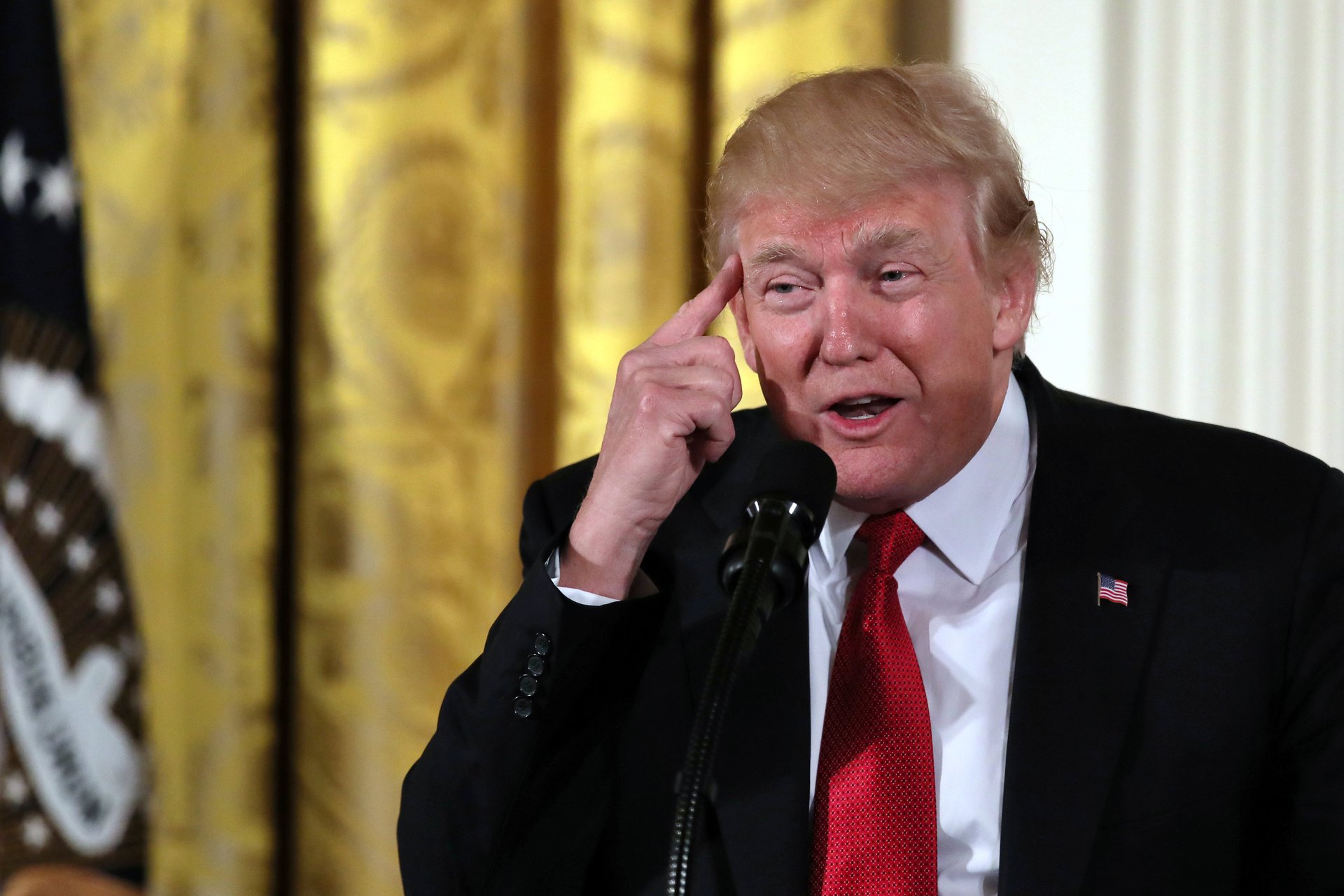On Day 92, Trump decided judging a president’s first 100 days is a “ridiculous standard”
An early morning tweet from US president Donald Trump had a resolute message for the American public: judging his administration on its first 100 days is a “ridiculous standard.”


An early morning tweet from US president Donald Trump had a resolute message for the American public: judging his administration on its first 100 days is a “ridiculous standard.”
“Media will kill!” he wrote.
To be fair, the focus on what a president accomplishes in the first 14 weeks—though the practice dates back to Franklin D. Roosevelt’s first term in 1933—is an arbitrary earmark at best.
At worst, it’s a “massive media exercise in premature evaluation that has become as inevitable as it is asinine,” political analyst Jeff Greenfield writes in Politico.
The problem with Trump’s tweet is that before he was staring into the abyss of Day 92, he was a consistent proponent of the 100-day marker.
During the campaign, Trump repeatedly referred to action he would take both on “day one” and within his first 100 days as president.
He doubled down on that message in October, releasing a “Contract with the American Voter:” his “100-day action plan to Make America Great Again.”
“It is a contract between myself and the American voter — and begins with restoring honesty and accountability, and bringing change to Washington,” the statement read. “On November 8th, Americans will be voting for this 100-day plan to restore prosperity to our economy, security to our communities and honesty to our government.”
Trump said his administration would pass tax reform, spur $1 trillion in infrastructure investment and of course, repeal and replace Obamacare—along with more than two dozen other promises—within his first 14 weeks in office.
Since winning the White House, however, Trump has confronted the realities of governing—negotiating a steep learning curve for a man who has never held public office. In turn, his “I alone can fix it” rhetoric has been slowly shifting into a somewhat more measured discourse.
On Feb. 27, with his promise of health-care reform in peril, Trump told reporters that a solution was forthcoming, but “nobody knew that health care could be so complicated.” Ultimately, the GOP effort failed. “We came really close today, but we came up short,” House speaker Paul Ryan said then. “Doing big things is hard.”
Following his meeting with Chinese president Xi Jinping, Trump told the Wall Street Journal that on the subject of China and North Korea: “After listening [to Xi] for 10 minutes I realized that…it’s not so easy.”
Yet as recently as April 18, Trump was still referring to the 100-day marker to talk up his administration’s accomplishments.
“No administration has accomplished more in the first 90 days — that includes on military, on the border, on trade, on regulation, on law enforcement… and on government reform,” he said.
But now as the deadline looms, Trump is hoping the American public will look beyond his first 14 weeks to assesses his administration’s effectiveness.
In many ways, he’s likely to get his wish. A recent poll found that voters are grading his 100-day performance on a predictably partisan curve: Republicans are reasonably happy—and Democrats? Not so much. Nearly half of self-identified Democratic voters gave Trump an “F” grade, with another 19 percent giving him a “D.”
So for Trump’s biggest supporters, April 29 will likely be just another day in Washington.
That is, if the government doesn’t shut down completely.
Read next: